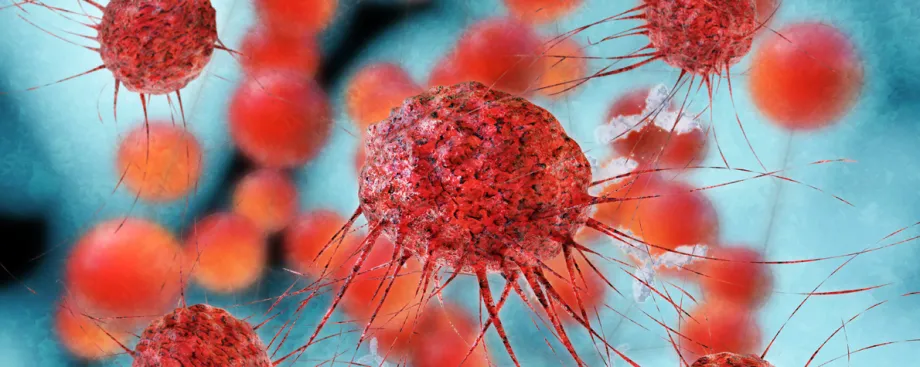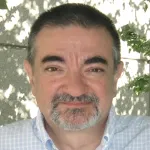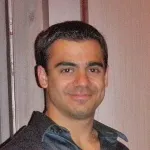
Graphic by xrender, Shutterstock.
Stanford Medicine News Center - November 28th, 2016 - by Yasemin Saplakoglu
A baseball glove is typically made from leather. If a new design made gloves more attractive to baseballs — catching them at higher rates than the typical glove — would it be a game changer?
Researchers at Stanford University School of Medicine created such a glove at a microscopic scale. They developed a receptor — with a half-circle shape like that of a baseball glove — that attracted a key cancer-causing molecule called Gas6 and took it out of play, slowing the progression of pancreatic and ovarian cancer in mice.
The study was published online Nov. 28 in The Journal of Clinical Investigation.
When used alone or in combination with chemotherapy in mice, their “decoy receptor” showed a higher ability to reduce or stop cancer growth than other treatments did.
They also elucidated a previously unknown mechanism in the body. In mice, when the researchers inhibited Gas6 from binding to its native receptor, Axl, the cancer cells began to release DNA-damaging molecules, causing the cells to die. This suggests a potential method to improve current therapeutic approaches.
“We were even able to get some animals cured, even those that started out with widespread and aggressive metastatic disease,” said Amato Giaccia, PhD, professor of radiation oncology and lead author of the study.
The problem with current treatment
The researchers wanted to test their molecule in animal models of ovarian and pancreatic cancer, which are hard to detect in early stages. Current treatment options for ovarian and pancreatic cancer patients are limited and usually require a combination of surgery, radiation and chemotherapy. The therapies can have toxic side effects and rarely lead to a complete cure. So researchers have been increasingly turning to other medications, such as antibiotics or small compounds called tyrosine kinase inhibitors, to use with them. But those medications also have drawbacks: They’re toxic, so they can’t be delivered in large quantities, and they are unable to beat the strong attraction between Gas6 and Axl. Although they can sometimes stop tumor growth, they rarely result in complete eradication of cancer.
“A lot of treatments out there are very toxic because they are not specifically targeting the cancer cells, and they have a huge burden on the liver and kidney,” said Rebecca Miao, PhD, a Stanford research associate who shares lead authorship of the study. “Our decoy receptor seems in mice to not only to be very efficacious but also safe.”
Giaccia said, “We basically came up with a better glove, with a much stronger ability to catch the baseball — in this case, Gas6.”
Activation of Axl: a key player in different forms of cancer
Gas6 is a molecule that binds and activates Axl, the surface receptor that plays a key role in cell survival, growth and migration. In many forms of cancer, Axl is over-expressed and binds Gas6 very strongly, which makes it difficult for the development of therapeutics to target this complex.
However, Giaccia and his team developed a decoy receptor that binds to Gas6 around 350 times better than Axl does. When given to mice, the decoy took out the Gas6 molecules from the system and blocked them from activating Axl, suppressing cell growth and migration and stopping cancer growth.
“Our molecule has a higher affinity for Gas6, so it is more effective in taking it out,” said Giaccia.
To create the decoy receptor, called MYD1-72, they used yeast as a vessel to express different mutations of the Axl protein. They then labeled Gas6 with a fluorescent molecule so that they could detect which mutated Axl protein it best bound with.
Once they found the most effective mutation, they tested it against other promising therapies that target the Axl pathway and that are currently in clinical trials: BGB324 and foretinib. MYD1-72 and foretinib were both able to reduce tumor size and metastasis, but foretinib showed toxicity in the mice. BGB324 showed little in the way of harmful effects on the mice, but did not reduce tumor burden.
The researchers further tested their new decoy receptor on pancreatic and ovarian cancer in mice.
In ovarian cancer models, they tested the efficacy of MYD1-72 both alone and in conjunction with a DNA-damaging agent called doxorubicin that is commonly used for treatment. They found that alone, MYD1-72 reduced tumor burden by 95 percent. In combination with doxorubicin, most mice ended up with almost complete tumor reduction. In mice with more aggressive forms of ovarian cancer, MYD1-72 alone decreased tumor weight by 51 percent, whereas doxorubicin decreased tumor weight by 91 percent. When used together, the researchers measured a 99 percent reduction of tumor weight.
In pancreatic cancer, they also found that MYD1-72 in combination with a DNA-damaging agent called gemcitabine showed greater tumor reduction. Alone, MYD1-72 did not make any impact on the mice’s tumor burden. Mice treated with MYD1-72 and gemcitabine together had a three times higher survival rate than mice not on any treatment.
These results suggested that a combination therapy of their decoy receptor and DNA-damaging agents could result in significantly lower levels of tumor burden.
Hoping to bring therapy to clinic
“We are actively working to push this into clinical trials,” said Miao. “But we are also interested in looking at how our molecule affects other types of cancers.” They hope to continue studies on how this decoy receptor could enhance treatments for other types of cancer, such as leukemia.
“These pre-clinical models in mice are pretty robust as we’ve shown in a number of different tumor settings and now in ovarian cancer and pancreatic cancer,” said Giaccia. “But we need to ultimately test this in human cancers.”
The paper’s other lead author is Mihalis Kariolis, PhD, a former postdoctoral scholar at Stanford who is now a staff scientist at Denali Therapeutics.
Other Stanford co-authors are postdoctoral scholars Monica Olcina, PhD and Shiven Kapur, PhD; graduate student Anh Diep; Douglas Jones II, PhD, a former PhD student now at Torque Therapeutics; Shannon Nash, a former summer research fellow; Dadi Jiang, PhD, instructor in radiation oncology; Irimpan Mathews, staff scientist at SLAC; Albert Koong, MD, PhD, professor of radiation oncology; Erinn Rankin, PhD, assistant professor of radiation oncology; and Jennifer Cochran, PhD, associate professor of bioengineering.
Stanford University holds a patent for the decoy receptor. Giaccia and Koong formed a company, Aravive Biologics, that has licensed the patent.
This research was supported by the Wallace H. Coulter Translational Research Grant Program, Stanford ChEMH, Stanford Bio-X, the ARCS Foundation, the National Cancer Institute (grant 88480), the National Institutes of Health (grant T32GM008412), a Siebel Graduate Fellowship, the Cancer Research Institute, the Silicon Valley Foundation, the Kimmelman Fund and the Skippy Frank Foundation.
Stanford’s Department of Radiation Oncology also supported the work.




